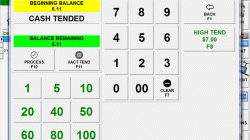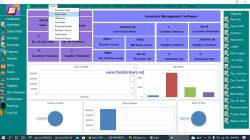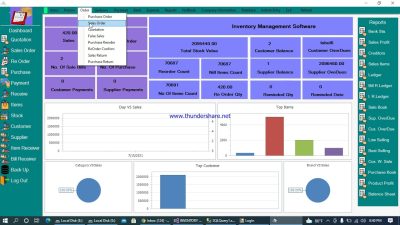
In today’s rapidly evolving digital landscape , software updates are an indispensable part of our daily lives. From the smartphones in our pockets to the computers we use at work , software powers nearly every facet of our modern world. But , with this reliance on software comes the responsibility of keeping it up-to-date. A “software update” is a revised version of a piece of software. Software updates often offer improvements to correct software bugs or glitches , to improve the security of the software , to add new attributes , or to improve the software’s compatibility with other software or hardware. In this thorough guide , we’ll delve into the world of software updates , exploring why they matter , the varied types of updates , how to stay informed , and optimal practices for managing them. Whether you’re a tech-savvy individual or a casual computer user , this article will offer you with the knowledge and insights you need to navigate the ever-changing landscape of software updates. So , let’s embark on this journey together and unlock the secrets to keeping your software running smoothly and securely. The importance of “update” cannot be overstated. A well-maintained “software” environment is a secure and efficient one.
Why Software Updates Matter: A Deep Dive
Software updates are more than just routine maintenance ; they are essential for the health and security of your digital ecosystem. Let’s explore the key reasons why you should prioritize software updates:
- Security Enhancements: Software vulnerabilities are constantly being discovered by hackers and cybercriminals. Software updates often include security patches that address these vulnerabilities , protecting your devices and data from malicious attacks. Ignoring updates can leave you vulnerable to malware , viruses , and other online threats.
- Bug Fixes: Software is complex , and bugs are inevitable. Software updates often include bug fixes that resolve glitches , errors , and other performance issues. These fixes can improve the stability and reliability of your software , ensuring a smoother and more enjoyable user experience.
- Performance Improvements: Software updates can also include performance improvements that maximize the way your software works. These improvements can outcome in faster loading times , smoother animations , and reduced battery consumption. By keeping your software up-to-date , you can ensure that it runs at its optimal.
- New attributes and functionality: Software updates often introduce new attributes and functionality that enhance the user experience. These new attributes can scope from minor tweaks to major overhauls , adding value and extending the lifespan of your software. By staying up-to-date , you can take benefit of the latest innovations and get the most out of your software.
- Compatibility: As technology evolves , software needs to be updated to remain compatible with new hardware , operating systems , and other software. Software updates ensure that your software continues to work seamlessly with the latest technologies , preventing compatibility issues and ensuring a smooth user experience.
Understanding varied Types of Software Updates
Software updates come in various forms , each serving a specific purpose. Here’s a breakdown of the most common types of software updates:
- Major Updates: Major updates are significant releases that introduce new attributes , functionality , and design changes. These updates often involve a complete overhaul of the software and may require a significant amount of time to install. Major updates are typically numbered with a whole number increment (e.g. , from version 1.0 to 2.0).
- Minor Updates: Minor updates are smaller releases that focus on bug fixes , security enhancements , and performance improvements. These updates are typically less disruptive than major updates and can be installed more quickly. Minor updates are typically numbered with a decimal increment (e.g. , from version 1.1 to 1.2).
- Patches: Patches are small , targeted updates that address specific security vulnerabilities or bugs. These updates are often released quickly in response to emerging threats and are critical for maintaining the security of your software. Patches are typically numbered with a letter or a minor decimal increment (e.g. , from version 1.2a to 1.2.1).
- Driver Updates: Driver updates are specific to hardware devices and ensure that your computer can communicate effectively with these devices. These updates can improve the performance and stability of your hardware , as well as add support for new attributes. Driver updates are typically released by the hardware manufacturer.
How to Stay Informed About Software Updates
Staying informed about software updates is crucial for ensuring that your software remains up-to-date. Here are some tips for staying in the loop:
- Enable Automatic Updates: Most software programs offer the option to enable automatic updates. This attribute automatically downloads and installs updates in the background , ensuring that your software is always up-to-date without requiring any manual intervention. While convenient , be sure to review update details before installation.
- Subscribe to Newsletters and Alerts: Many software vendors offer newsletters and email alerts that notify you of new software releases. Subscribing to these notifications can help you stay informed about the latest updates and ensure that you don’t miss any crucial security patches.
- Follow Software Vendors on Social Media: Social media platforms like Twitter and Facebook are often used by software vendors to announce new software releases and offer updates on known issues. Following your favorite software vendors on social media can help you stay informed about the latest news and updates.
- Check for Updates Manually: Even if you have automatic updates enabled , it’s still a good idea to check for updates manually from time to time. This can help you ensure that you haven’t missed any updates and that your software is running the latest version. You can usually check for updates by going to the “About” or “Help” menu in your software program.
optimal Practices for Managing Software Updates
Managing software updates effectively can help you minimize disruptions and ensure a smooth update process. Here are some optimal practices to follow:
- Back Up Your Data: Before installing any software update , it’s always a good idea to back up your data. This will protect you from data loss in case something goes wrong during the update process. You can back up your data to an external hard drive , cloud storage , or another secure location.
- Read the Release Notes: Before installing a software update , take the time to read the release notes. The release notes offer information about the changes included in the update , as well as any known issues or compatibility concerns. This information can help you make an informed decision about whether or not to install the update.
- Schedule Updates for Off-Peak Hours: Software updates can sometimes take a while to install , and they may require you to restart your computer. To minimize disruptions , schedule updates for off-peak hours , such as overnight or during weekends.
- Test Updates in a Non-Production Environment: If you’re managing software updates for a business , it’s a good idea to test updates in a non-production environment before deploying them to your production systems. This will allow you to determine any potential issues or compatibility concerns before they affect your users.
- Keep a Record of Updates: Keep a record of all software updates that you install , including the date , version number , and any pertinent notes. This record can be helpful for troubleshooting issues and tracking changes to your software environment.
The Future of Software Updates
The world of software updates is constantly evolving , with new technologies and approaches emerging all the time. Here are some trends to watch for in the future of software updates:
- AI-Powered Updates: Artificial intelligence (AI) is increasingly being used to automate and maximize the software update process. AI can be used to determine and prioritize updates , predict potential issues , and even automatically install updates without user intervention.
- Cloud-Based Updates: Cloud-based software updates are becoming increasingly common , allowing software vendors to deliver updates directly to users’ devices over the internet. This approach simplifies the update process and ensures that users always have access to the latest version of the software.
- Modular Updates: Modular updates are designed to update only specific components of a software program , rather than the entire program. This approach can reduce the size and complexity of updates , making them faster and less disruptive to install.
- Security-Focused Updates: As cyber threats become more sophisticated , software updates will increasingly focus on security enhancements. These updates will include advanced threat detection , vulnerability patching , and other security measures designed to protect users from online attacks.
In conclusion , software updates are a critical facet of maintaining a secure , efficient , and enjoyable digital experience. By understanding the importance of updates , staying informed about new releases , and taking proactive steps to manage them , you can ensure that your software remains up-to-date and continues to meet your needs. So , embrace the power of software updates and unlock the full potential of your digital world!












